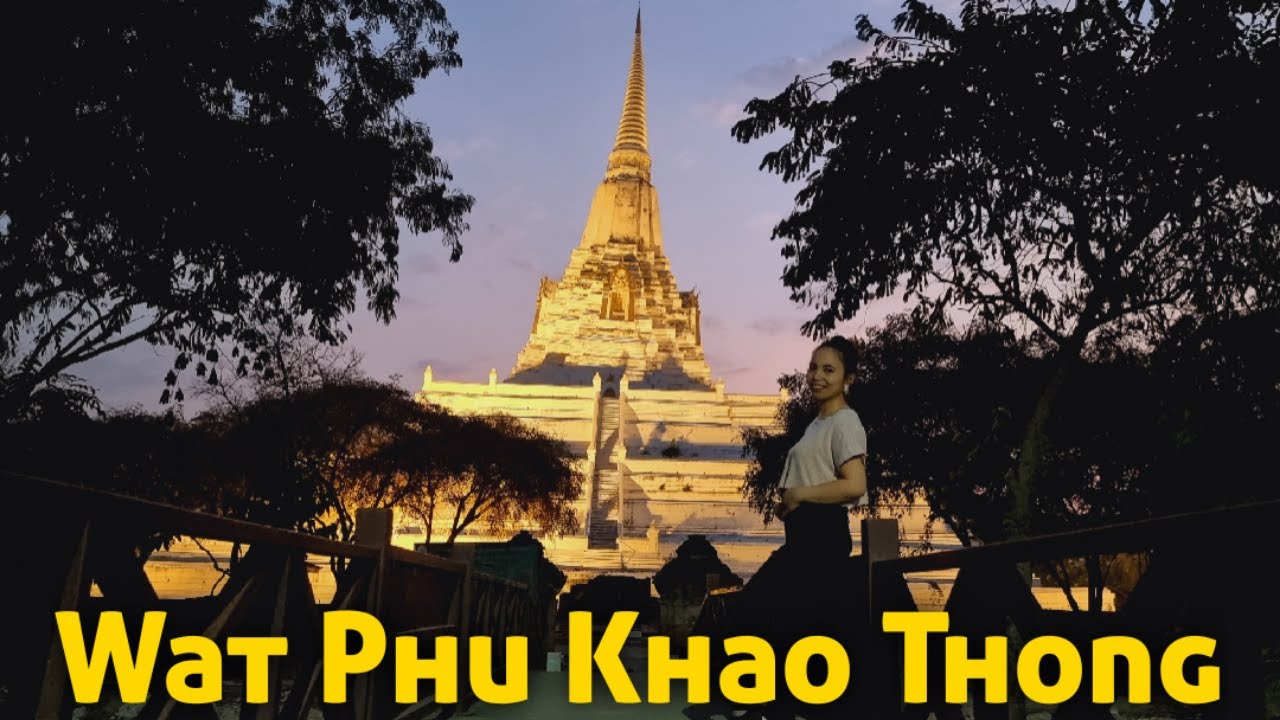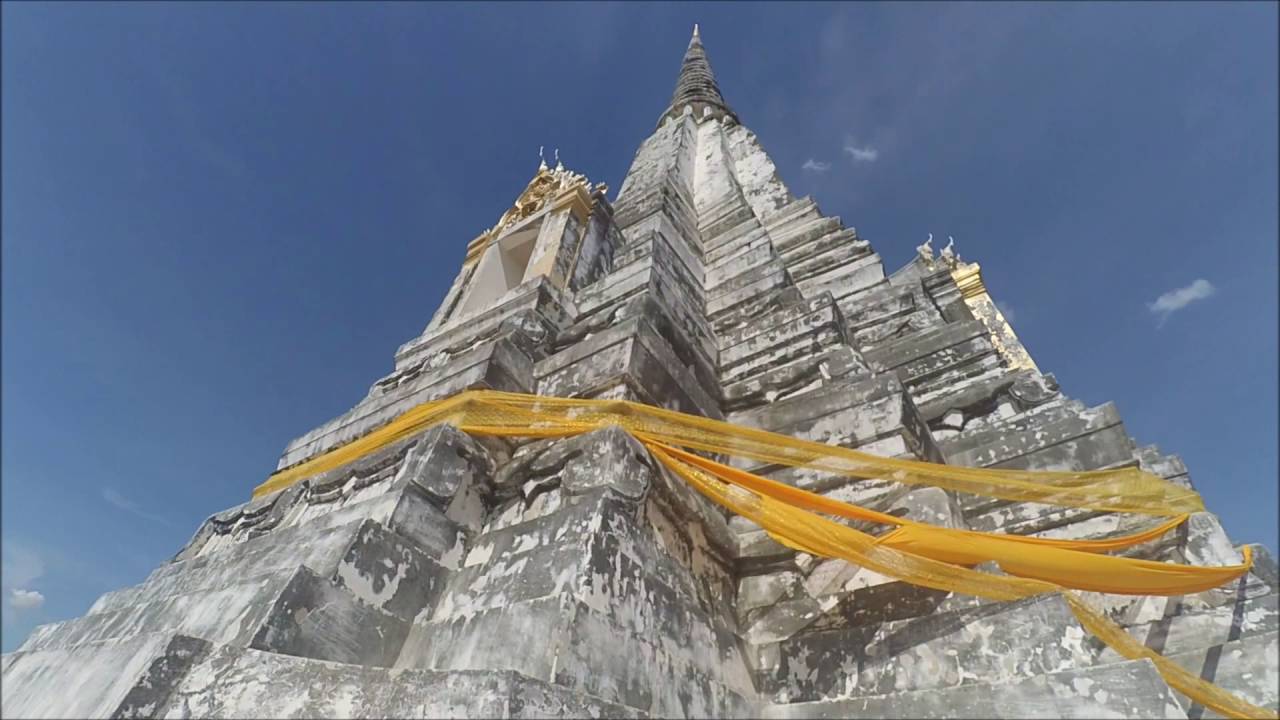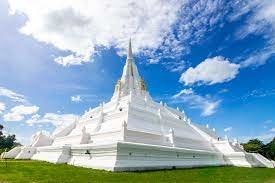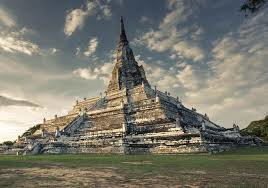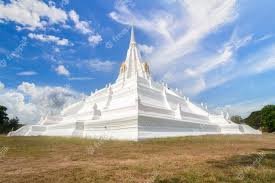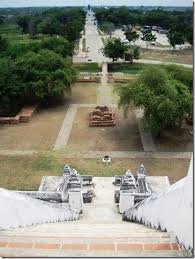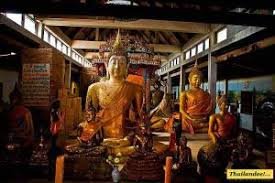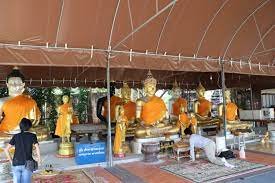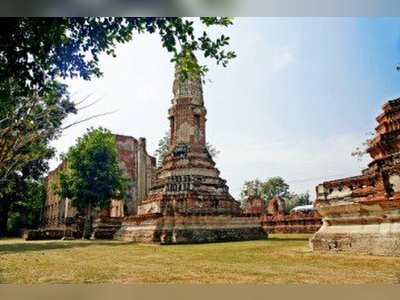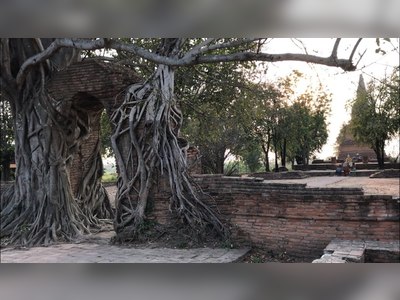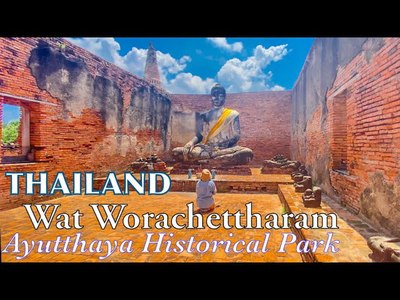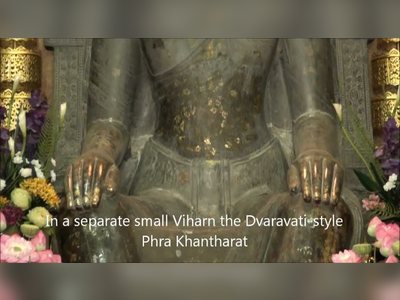Wat Phu Khao Thong
A one-of-a-kind temple, the Wat Phu Khao Thong or 'Monastery of the Golden Mount' located in Ayutthaya is unique for the diversity it offers to its viewers!

Take the stairs to the top, and bask in the environs of the temple, with views of surrounding mosques, paddy fields, kampongs and the dynamic diasporic diversity that Ayutthaya has to offer. The temple is attached to a small monastery. Therefore, one can partake in and see the monks going about their daily business.
Wat Phu Khao Thong features a clash of two unique architectural styles. The pagoda was initially sanctioned by a Burmese commander to commemorate a successful siege of Ayutthaya but only managed to complete the base structure before he left. After Ayutthaya regained its independence, a Thai style pagoda was superimposed on the Mon-style base. With its dynamic trajectories of development and history, the Wat Phu Khao Thong is a visual delight for everyone wishing to explore Ayutthaya. It is symbolic of not only the conflicts in Thai history but also those periods of stability, where attempts at subordination and resistance persisted. Certainly, a visit is recommended!
Tips
Dress appropriately, by covering your shoulders and knees.
Take off shoes within temple premises and maintain the decorum of the site.
History & Significance
Many legends believe that Wat Phu Khao Thong may be dedicated to the god of the mountain, who safeguarded them and was also the guardian of the city. However historically speaking, facts are different. The monastery was initially built in 1395 by the Ayutthaya monarch, King Ramesuan. As discussed previously, the temple boasts of complicated history and trajectory of development.
It is believed that the chedi, in Mon-Burmese style, was erected by the Burmese forces when they occupied Ayutthaya, after the ransacking of 1568-69. However, this chedi was never completed. When King Naresuan defeated the Burmese forces, he decided to construct a chedi over the unfinished product of the Burmese. Today, the standout feature of the present chedi is the way it encapsulates the best of both architectural styles. Today, this hybrid structure is regarded as a single chedi, with stairs on all four directions.
Architecture of Wat Phu Khao Thong
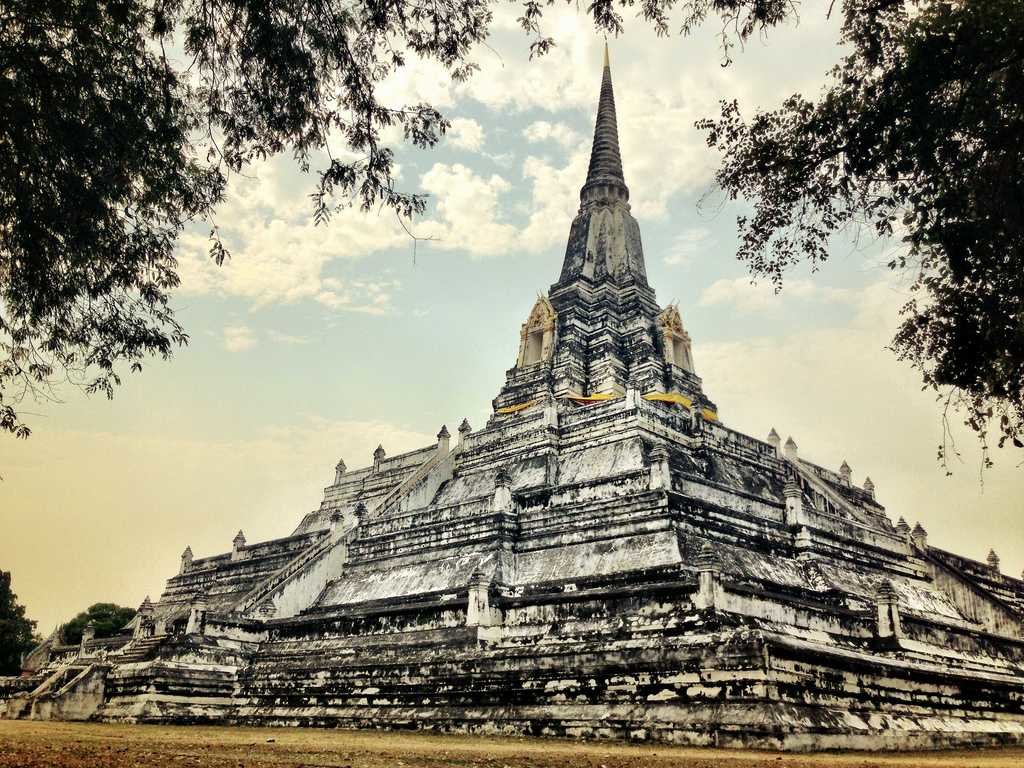
New structures have been constructed over the ancient ruins at Wat Phu Khao Thong, where one can locate the foundations and parts of the pillars of the old ubosot. The complex has two gates, and its entrance faces the north east. The present ubosot houses numerous relics and statues of the Buddha, including what is claimed to be his footprint. The vihara or wihan is located adjacent to the north-east.
Other structures within the complex include bell-shaped chedis, an outer wall and moat. From the earliest sources of the 17th century, we know that the wat was initially a bell-shaped dome with an octagonal base. Over the years, the chedi atop this pedestal deteriorated and later collapsed. King Boromakot, one of the last Ayutthaya kings, had the chedi rebuilt in 1744, on a square base this time around. To commemorate 2,500 years of Buddhism, the Thai government placed a golden ball, weighing about 2.5 kilograms, on top of the chedi in 1956. The main road circle has a huge display of large rooster statues around the model of King Naresuan atop the horse, erected by the Department of Public Works and Town & Country Planning and the Fine Arts Department.
How To Reach Wat Phu Khao Thong
Wat Phu Khao Tong is located in the Phu Khao Thong subdistrict, to the north of Ayutthaya. Since it’s located at the outskirts of the city, it would be advisable to have a car or a tuk-tuk ride, preferably one that is booked for rides to and fro. One can also take the water taxi, which costs about 8 baht one way. The temple complex provides parking space, so feel free to drive or take a private taxi ride here
Phra Nakhon Si Ayutthaya District
Phra Nakhon Si Ayutthaya 13000
